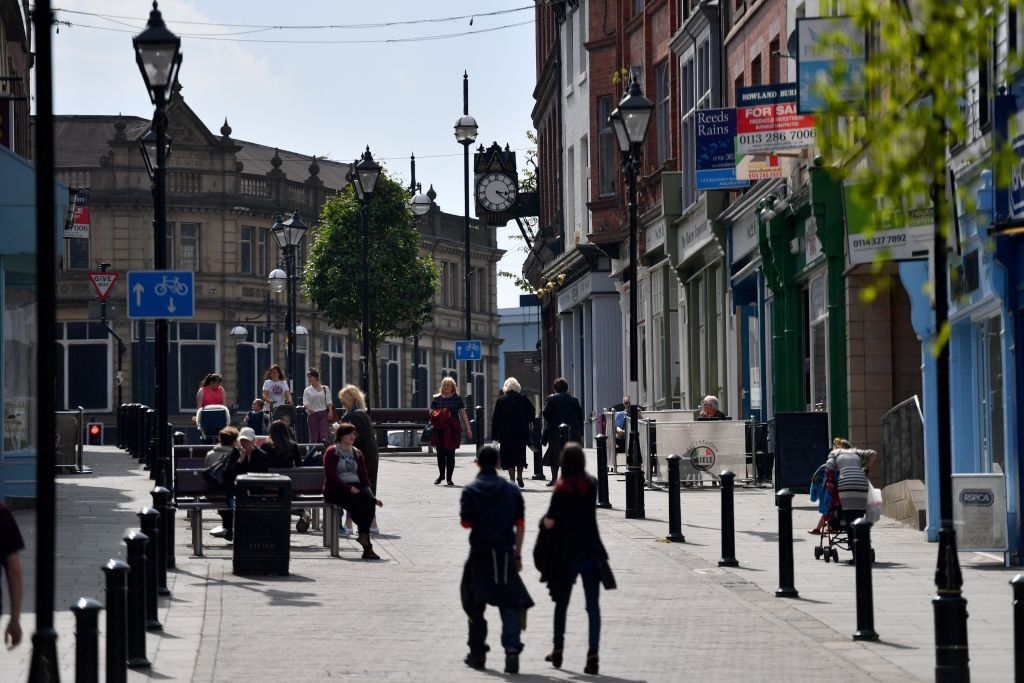Democratic Rep. Eric Swalwell Wants To Make ‘Assault Weapons’ Illegal, And ‘Prosecute’ Those Who Won’t Hand Theirs Over

On Thursday, Rep. Eric Swalwell (D-CA) penned an op-ed for USA Today, titled: "Ban assault weapons, buy them back, go after resisters: Ex-prosecutor in Congress."
In the piece, Swalwell not only argues that the federal "assault weapons ban" should be reinstated, he further demands that the United States government institute a mandatory buyback of semi-automatic rifles. Swalwell then goes even further, stating that if Americans are unwilling to hand over their semi-automatic rifles to the government, they should be sought out and prosecuted:
Reinstating the federal assault weapons ban that was in effect from 1994 to 2004 would prohibit manufacture and sales, but it would not affect weapons already possessed. This would leave millions of assault weapons in our communities for decades to come.Instead, we should ban possession of military-style semiautomatic assault weapons, we should buy back such weapons from all who choose to abide by the law, and we should criminally prosecute any who choose to defy it by keeping their weapons. The ban would not apply to law enforcement agencies or shooting clubs.
Swalwell notes that Australia’s buyback was a success, adding that while it would cost a great deal of money to do the same in the United States, it would be worth it. He also highlights Newtown, Orlando, Las Vegas, and Parkland as examples to explain why the United States should ban semi-automatic rifles:
Like so many American mass-shooting victims in recent decades, their doom was all but assured by the murderer’s tool.
Using somewhat specious logic, Swalwell goes over why "assault weapons" should be banned from public use:
Trauma surgeons and coroners will tell you the high-velocity bullet fired from a military-style, semiautomatic assault weapon moves almost three times as fast as a 9mm handgun bullet, delivering far more energy. The bullets create cavities through the victim, wrecking a wider swath of tissue, organs and blood vessels. And a low-recoil weapon with a higher-capacity magazine means more of these deadlier bullets can be fired accurately and quickly without reloading.
Here’s the problem — setting aside any constitutional objections (because those are rather obvious), Swalwell’s reasoning is faulty from the word go.
The Congressman mentions recent shootings in which semi-automatic rifles were used, but he doesn’t mention shootings in which handguns were the weapon of choice.
- In August 2012, a man using a Springfield Armory handgun killed six people as they entered a Sikh temple in Oak Creek, Wisconsin.
- In April 2012, a man using a .45-caliber handgun killed seven people at Oikos University in Oakland, California.
- In November 2009, a man using an FN Herstal 5.7 pistol killed 13 people and injured approximately 30 at the Fort Hood military post in Texas.
- In April 2009, a man using a Beretta 92 FS 9mm pistol and a Beretta PX4 Storm pistol killed 13 people when he opened fire in a civic center in Binghamton, New York.
- In 2007, a man using a Walther P-22 pistol and a 9mm Glock pistol killed 32 people at Virginia Polytechnic Institute. According to UT Dallas Professor Tomislav Kovandzik and Florida State University Professor of Criminology Gary Kleck: "The Virginia Tech shooter had 17 magazines for his handguns and most were of the ten round variety."
- In October 1991, a man using using a Glock 17 and a Ruger P89 killed 23 people and injured another 27 when he opened fire in a Luby’s Cafeteria in Killeen, Texas.
- In August 1986, a man using two .45-caliber pistols and a .22-caliber pistol killed 14 people and injured six more at a post office in Edmond, Oklahoma.
The seven shootings listed above were committed entirely with semi-automatic handguns.
Moreover, between 2010 and 2014, the FBI reports that 30,114 of the 63,061 homicides in the United States were committed using handguns. That’s 47.75%. Meanwhile, rifles were used in 1,530 homicides during the same period. That’s 2.4%. Even if one assumes that all of the "type not stated" firearms listed by the FBI are semi-automatic rifles, that’s 10,758 (17%) — and that’s an extremely generous assumption.
If Rep. Swalwell really wants a safer America via gun confiscation, he should be looking at handguns. However, because semi-automatic rifles are more frightening in appearance, they’re the easy virtue target.
Next Swalwell uses Australia’s 1996 buyback program as an example for the United States. Again, we have a problem.
The Council On Foreign Relations notes that only "one sixth" of Australia's national stock of "assault weapons" were recovered during the buyback:
The National Agreement on Firearms all but prohibited automatic and semiautomatic assault rifles, stiffened licensing and ownership rules, and instituted a temporary gun buyback program that took some 650,000 assault weapons (about one-sixth of the national stock) out of public circulation. Among other things, the law also required licensees to demonstrate a “genuine need” for a particular type of gun and take a firearm safety course.
If the Australian Government truly recovered only one sixth of the national stock, that would be approximately 650,000 "assault weapons" out of 3.9 million. Let us again be generous, and assume they recovered half. That still means that another 650,000 "assault weapons" remained in circulation after the buyback.
Moreover, University of Melbourne’s Wang Sheng-Lee and La Trobe University’s Sandy Suardi came to the conclusion in a 2008 paper that "the NFA [National Firearms Agreement] did not have any large effects on reducing firearm homicide or suicide rates."
They conclude:
Using a battery of structural break tests, there is little evidence to suggest that it [National Firearms Agreement] had any significant effects on firearm homicides and suicides. In addition, there also does not appear to be any substitution effects, that reduced access to firearms may have led those bent on committing homicide or suicide to use alternative methods.Since the 1996 Port Arthur massacre, two other shooting incidents have attracted much media attention in Australia. An incident on 21 October 2002 at Monash University, in which a gunman killed two people and wounded five, prompted the National Handgun Buyback Act of 2003. Under this scheme that ran from July to December 2003, 70,000 handguns were removed from the community at a cost of approximately A$69 million. Another shooting on 18 June 2007, in which a lone gunman killed a man who had come to the aid of an assault victim and seriously wounded two others in Melbourne's central business district during morning rush hour, renewed calls for tougher gun controls.Although gun buybacks appear to be a logical and sensible policy that helps to placate the public's fears, the evidence so far suggests that in the Australian context, the high expenditure incurred to fund the 1996 gun buyback has not translated into any tangible reductions in terms of firearm deaths.
While firearm homicides in Australia have plummeted in the years following the NFA, they were already dropping in the decade prior to the buyback, according to Gun Policy:
Additionally, according to the Australian Bureau of Statistics, between 2010 and 2014, firearms were used in 15.1% of all murders in which a weapon was utilized. 29.3% of "attempted murders" in which weapons were utilized were committed with firearms.
With his gun confiscation op-ed, Rep. Swalwell is doing two things — he’s virtue signaling, and he’s making false comparisons. Swalwell is showing voters that he can “stand up to the man,” which in 2018 is the NRA, Republicans, President Trump, and anyone who defends the Second Amendment. Swalwell is also using a false comparison in order to make his suggestions sound more credible and feasible than they actually are.
Progressives often use mass shootings to seed resentment toward conservatives and Second Amendment advocates. They employ vague language such as "common sense gun control" as a way to cloud public opinion, while at the same time advocating extreme policies. Many progressives want to see the Second Amendment repealed, and all firearms confiscated — but few will actually say that out loud. Instead, they’ll mock conservatives, repeatedly telling them that "no one is coming to take your precious guns."
Rep. Swalwell, however wrong he may be, seems to be gripping at the threads of the intellectually honest position upon which his colleagues are afraid to stand.




